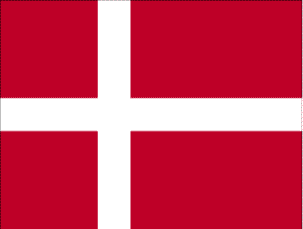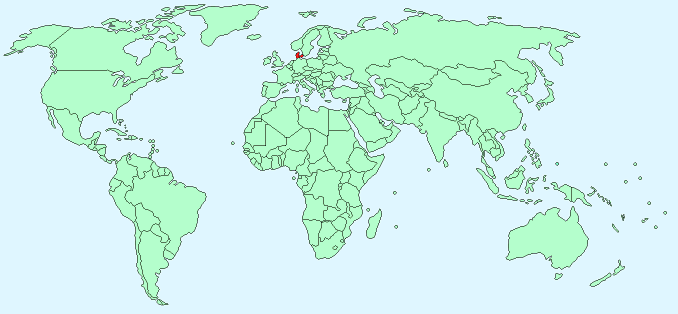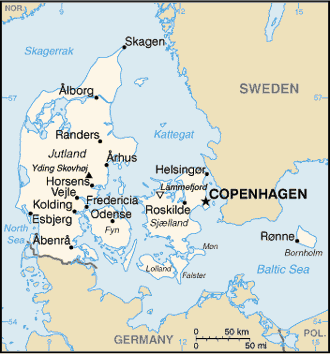Denmark


Continent – Europe
Region – Western Europe
Territories – Greenland
Size – 43,094 km²
Geography – low, flat with rolling plains
Language – Danish
Religion – 95% Evangelical Lutheran, 3% other Christian, 2% Muslim
Monetary Unit – Danish Krone
Natural Resources – petroleum, natural gas, fish, salt, limestone, chalk, stone, gravel and sand
Agriculture – barley, wheat, potatoes, sugar beets; pork, dairy products; fish
Industry – iron, steel, nonferrous metals, chemicals, food processing, machinery and transportation equipment, textiles and clothing, electronics, construction, furniture and other wood products, shipbuilding and refurbishment, windmills, pharmaceuticals, medical equipment

Neighbouring Countries – Germany
Population – 5,569,077 (2014 estimate)
Population Growth Rate – 0.22%
Average Life Expectancy – 79.09
Capital City – Copenhagen (579,513)
Highest Mountain – no mountains
Longest River – no major rivers
Climate – temperate, cool summers 11°C to 22°C and cold winters -3°C to 10°C
Yearly Rainfall – 60 cm (approx)
Plant Life – spruce, beech, ferns, mosses, flowers, fungi
Animal Life – fox, hare, rabbit
Bird Life – partridge, skylark
Harvard Reference for this page:
Heather Y Wheeler. (2015). Denmark. Available: https://www.naturalhistoryonthenet.com/Facts_Figures/Country_Facts/denmark.htm. Last accessed Monday, July 18, 2016
Facts and Figures Pages
